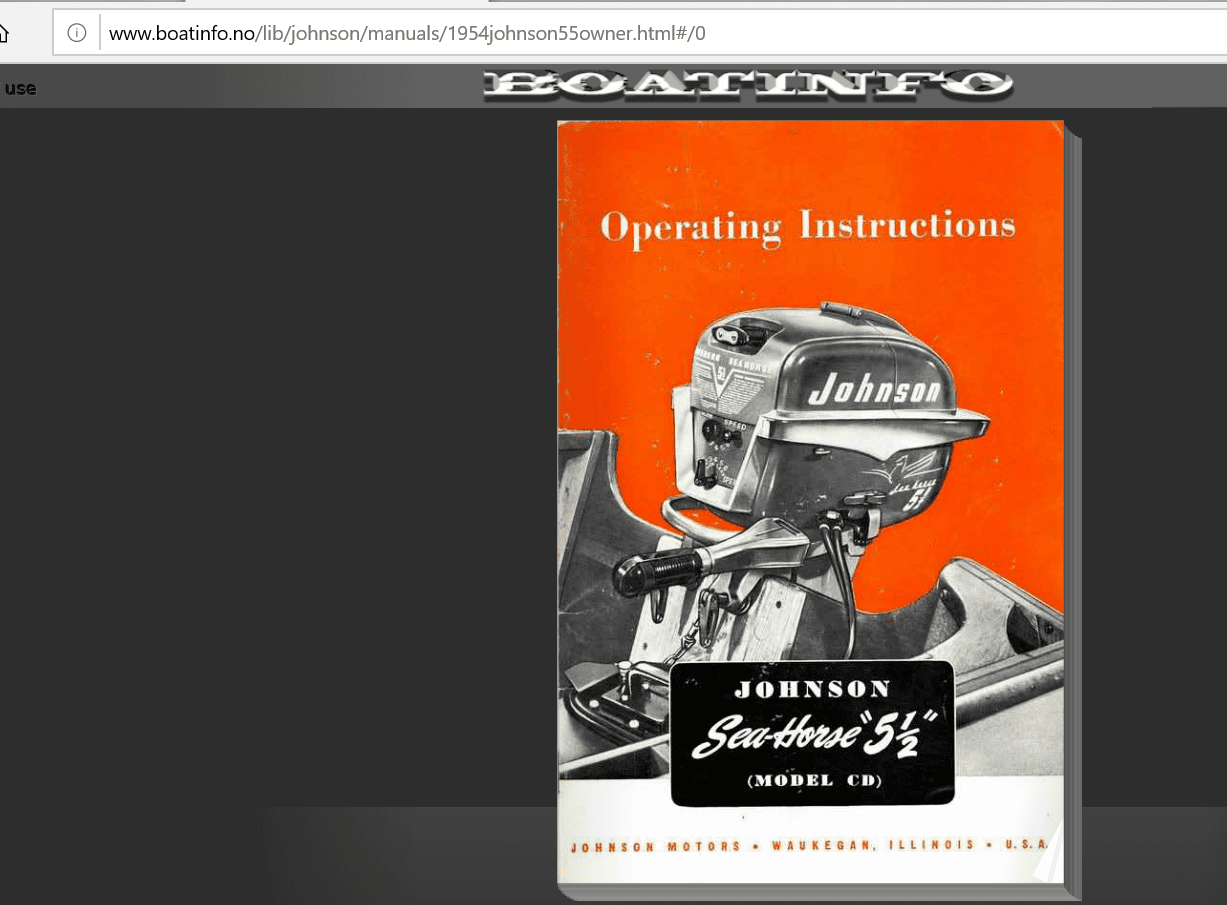Home › Forum › Ask A Member › 1954 Johnson CD-10 5.5 HP – Magneto Armature Plate Grunge
- This topic has 20 replies, 10 voices, and was last updated 4 months, 2 weeks ago by
aquasonic.
-
AuthorPosts
-
July 16, 2025 at 5:33 pm #298232
I’m the process of restoring the subject motor…it’s probably the first significant maintenance ever done on it. My family has owned this motor for 60+ years and it hasn’t run in 40+ years. I am pretty sure the motor does not have very many hours on it. I just removed the magneto to rework it and found on the bottom side of the armature plate greasy residue in the area of the crankshaft. There was not a ton of grease, but just enough that I question whether the power head upper crankshaft seal may be leaking. There was also a little greasy residue on the top side of the armature plate. I know that my dad had trouble with the carburetor and fuel leaks gave the power head a light coating of oil that I’m in the process of removing. In the attached photo, I’ve removed the greasy residue for the most part, but observe extreme discoloration around the spark plug wires. Is any of this normal? Any concerns? Thoughts?
July 16, 2025 at 6:28 pm #298234Everything you described is normal. The upper crankshaft has no seal. Instead, it has a slinger, which is pretty effective on this model.
Improvise-Adapt-Overcome
1 user thanked author for this post.
July 16, 2025 at 9:20 pm #298236just wash it up put in some new metallic strand plug wires tune it up, change condensers and clean the points and time it….go fishing
http://www.youtube.com/watch?v=ga1Cjymj6ms&feature=youtu.be
Joining AOMCI has priviledges 🙂
1 user thanked author for this post.
July 18, 2025 at 12:03 pm #298255Regarding the reworking of the magneto, I bought new points, condensers, coils, and spark plug wires. After I got the coils off, I inspected and tested them. Visual inspection revealed that they had no cracks…they actually looked new. Both the primary and secondary coils on each coil were electrically tested to be good. Even though the coils “appear” to be good, should I trust that these 70 year old ignition coils are truly good or will they likely fail once they start being used? What is your experience?
July 18, 2025 at 12:12 pm #298256Based on that this is a 1954 Johnson CD-10 5.5 Hp model, if the coils are not cracked then they have been replaced somewhere along the way. If no cracks, and electrical tests are good, then they should be fine. Check for chafing on fine coil wires too. Are those Prufrex coils?
Improvise-Adapt-Overcome
1 user thanked author for this post.
July 18, 2025 at 1:01 pm #298257I have no idea whether they’re made by Prufrex. My internet research revealed that Prufrex is a West German company. The only writing on the ignition coils is “to fit OMC 582 995 Made in W-Germany”…so it might be.
I know that the motor has not been run since 1989 and highly likely much before that. My dad must’ve have had someone give it a tune up without my knowledge, but that would have to be in the pre-1989 timeframe.
July 18, 2025 at 2:06 pm #298261green coils should be fine … primaries around 1-2 ohms HV pin to either primary should read 4-8 Kohms approx.
reinstall with some di-electric grease and small rubber cups . make certain the HV 7mm metallic strand wire screws in on the pin at least 1/4 inch or more if you can. .
all these oldies end up with these !! btw before you invest to much $$$ a compression test is always suggested . 60psi upwards should show up.
p.s. forget the pictures of a CD I can’t remove them ?? old link does not work anymore
Joining AOMCI has priviledges 🙂
1 user thanked author for this post.
July 18, 2025 at 2:24 pm #298266more info ..
Maintaining Johnson/Evinrude 5
Joining AOMCI has priviledges 🙂
1 user thanked author for this post.
July 18, 2025 at 2:56 pm #298267The original coils have indeed been replaced with the German made Prufrex coils. I wouldn’t bother with replacing them as they are very good quality coils.
Bob
1937 Champion D2C Deluxe Lite Twin
1954 Johnson CD-11
1955 Johnson QD-16
1957 Evinrude Fastwin 18
1957 Evinrude 3022
1958 Johnson QD-19
1958 Johnson FD-12
1959 Johnson QD-20“Every 20 minute job is only a broken bolt away from a 3-day project.”
"Every time you remove a broken or seized bolt an angel gets his wings."1 user thanked author for this post.
July 19, 2025 at 2:20 pm #298313If the coils look good and the resistance test is good, they are probably good, but a resistance test doesn’t tell you if insulation is breaking down inside where you can’t see it, shunting the spark voltage to the core before it can build up high enough to jump the spark plug gap. To test for this, you need an instrument that actually applies a pulse to the primary and shows you a spark jumping a gap, or a small neon bulb indicating spark generated.
Dave
-
AuthorPosts
- You must be logged in to reply to this topic.


